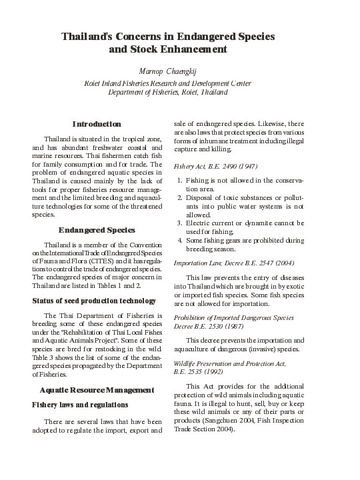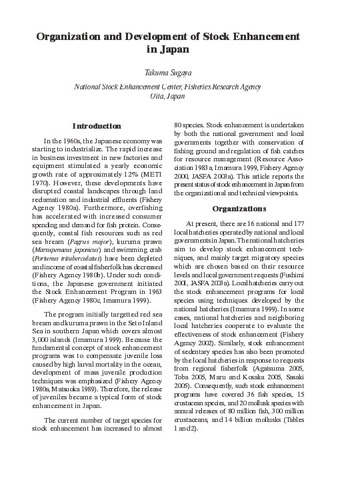| dc.contributor.author | Cruz, Renato D. | |
| dc.contributor.editor | Talib, Zulkifli | |
| dc.contributor.editor | Ali, Ahmad | |
| dc.contributor.editor | Yaacob, Ku Kassim Ku | |
| dc.contributor.editor | Isa, Mahyam Mohd. | |
| dc.date.accessioned | 2019-11-07T12:25:48Z | |
| dc.date.available | 2019-11-07T12:25:48Z | |
| dc.date.issued | 2004 | |
| dc.identifier.citation | Cruz, R. D. (2004). Philippines. In Z. Talib, A. Ali, K. K. K. Yaacob, & M. Mohd. Isa (Eds.), Conservation and Enhancement of Sea Turtles in the Southeast Asian Region (pp. 103-118). Kuala Terengganu, Malaysia: Marine Fishery Resources Development and Management Department, Southeast Asian Fisheries Development Center. | en |
| dc.identifier.isbn | 9839114166 | |
| dc.identifier.uri | http://hdl.handle.net/20.500.12561/1114 | |
| dc.description.abstract | There are five species of sea turtles that occur in the Philippines, namely green hawksbill, olive ridley, loggerhead and leatherback. Several locations for sea turtles nesting are shown in Table 6 (Cruz, 2004). The green turtles are widely found throughout the country, with high nesting aggregations in the Turtle Islands and the San Miguel Group of Islands, both in Tawi-Tawi (Cruz, 1999). The decline in the green turtles population is attributed to massive egg harvests that have been in progress for the past 43 years. The hawksbills are also widely distributed in the Philippines. Unlike the green turtles , there is no information on the aggregation of hawksbill throughout the archipelago. Lagunoy Gulf in the Bicol region has been identified as a development habitat of hawksbill turtles . The population of hawksbill is severely decimated as a result of excessive exploitation of eggs and the high demand for the shell (De Veyra, 1994). | en |
| dc.language.iso | en | en |
| dc.publisher | Marine Fishery Resources Development and Management Department, Southeast Asian Fisheries Development Center | en |
| dc.subject | Philippines | en |
| dc.subject | hatcheries | en |
| dc.subject | eggs | en |
| dc.title | Philippines | en |
| dc.type | Book chapter | en |
| dc.citation.spage | 103 | |
| dc.citation.epage | 118 | |
| dc.subject.asfa | aquatic reptiles | en |
| dc.subject.asfa | Conservation | en |
| dc.subject.asfa | legislation | en |
| dc.subject.asfa | nesting | en |
| dc.subject.asfa | fishery regulations | en |
| dc.subject.asfa | Incubation | en |
| dc.subject.asfa | protected areas | en |
| dc.subject.asfa | sanctuaries | en |
| dc.subject.asfa | training | en |
| dc.subject.asfa | conferences | en |
| dc.subject.asfa | lectures | en |
| dc.subject.asfa | extension activities | en |
| dc.subject.asfa | exhibitions | en |
| dc.subject.asfa | tagging | en |
| dc.subject.asfa | telemetry | en |
| dc.subject.asfa | tracking | en |
| dc.subject.asfa | international cooperation | en |
| dc.subject.asfa | international agreements | en |
| dc.subject.asfa | research | en |
| dc.subject.asfa | resource conservation | en |
| dc.subject.asfa | natural resources | en |
| dc.subject.asfa | Protected resources | en |
| dc.subject.asfa | rare resources | en |
| dc.subject.asfa | resource management | en |
| dc.citation.bookTitle | Conservation and Enhancement of Sea Turtles in the Southeast Asian Region | en |



